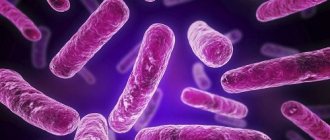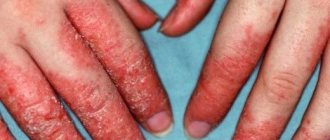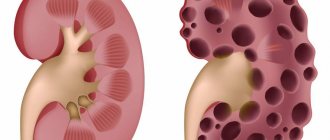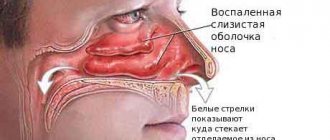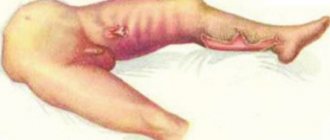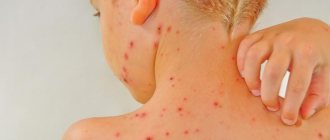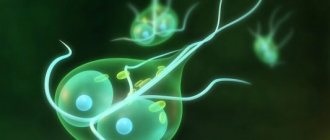What does prickly heat look like in adults? Photos
Miliaria is a common skin condition, most often found in infants. But it is often possible to detect a deterioration in the condition of the integument in adult patients. But what is the etiology and causes of this phenomenon? The fact is that with a radical change in a person’s living conditions, the skin may initially react negatively. When it is hot indoors or outdoors, a person sweats. Sweat is released, the liquid of which may contain crystalline salt elements. This substance penetrates into the pores, which are enlarged due to the heat, resulting in severe irritation.
Miliaria in adults, photos, symptoms and treatment of which will be discussed in the article, is an unpleasant disease. This is due to the fact that it leads to the formation of a red vesicular rash, as well as the occurrence of hyperemia and itching. In addition, the unattractive appearance of the disease does not go unnoticed, which reduces the patient’s self-esteem and negatively affects his psychological state. Knowing the specifics of taking the first treatment measures will help you avoid complications and get good health and beautiful skin.
Causes of the disease
Before eliminating a rash in adults , it is worthwhile to engage in detailed identification of the causes that provoke the development of the problem. There are a large number of factors.
- A sharp change in climatic living conditions (for example, moving from the middle zone to the south).
- Diseases associated with dysfunction of the endocrine system and nerves, leading to increased sweating.
- Performing work that requires increased intensity physical labor.
- A cold or infection accompanied by fever or heavy sweating.
- Wearing uncomfortable clothes made from low-quality material (synthetics).
- Excess weight, leading to difficulty walking and the release of large amounts of sweat.
- Regular use of skin care products that clog pores, which impedes the flow of oxygen.
To prevent heat rash, it is necessary to address existing rashes and redness, as well as ensure exposure to irritating factors.
Recognizing the disease by signs
To make an accurate diagnosis, you need to contact only a medical professional. But numerous photos show the peculiarities of the manifestation of the disease, and if you have developed something similar, you should pay attention to it and begin healing at home. Most often a rash appears on the body . It usually covers all areas and causes many physical, aesthetic and psychological discomforts. Despite the “frightening” appearance, prickly heat is not contagious and does not pose a threat to the health of internal organs and surrounding people.
Crystal prickly heat
Crystalline prickly heat is characterized by rashes in the form of small red multiple blisters, which are located quite tightly to each other. This type of prickly heat is considered the safest. Rashes from crystalline prickly heat may go away on their own after the provoking factor is eliminated.
There are cases when such prickly heat disappeared a few hours after its appearance. The cause of this type of heat rash is considered to be increased temperature in the environment. This entails increased activity of the sweat glands and the appearance of prickly heat. Bubbles with crystalline prickly heat are painless and do not manifest themselves in any way other than their appearance.
View photos
[collapse]
Miliaria in adults symptoms and types
Symptoms of the disease may vary depending on its types. In practice, papular (deep), crystalline, and prickly heat are distinguished.
Papular disease
This form of the disease often manifests itself in hot summers, when there is high air humidity. With this type of disease, rashes are formed that look like small, flesh-colored blisters with a diameter of 1-2 mm. A rash usually appears , abdomen, chest, and lower extremities. In addition to the main manifestations that we have already described, severe peeling and dry skin appear, which entails severe dryness and a feeling of discomfort.
Red type disease
If this form of the disease is detected, bubbles with a diameter of 2 mm appear. They have cloudy contents inside, the corolla is red and fuzzy along the borders. The blisters cannot merge into a single field and are accompanied by severe itching, especially if sweating increases and the temperature of the air and skin rises. The disease is especially severe in areas of high friction. appears on the legs (inner thighs), under the breasts (typical for women). Typically, this type of prickly heat occurs in the fair sex.
Miliaria crystal type
In adults, this type of disease rarely occurs; it is usually typical for children. The symptoms are white or transparent bubbles with a size of no more than 1 mm. Small individual elements can merge into one whole and form large zones. Then they may burst and dry out. The disease is accompanied by the appearance of small pustules on the skin. Locations: shoulders, back, torso. Additional manifestations of the disease include severe itching and increased skin swelling, especially in childhood.
Miliaria apocrine
This type of disease manifests itself in connection with disturbances in the activity of the apocrine glands, which are located in the armpit, anus, nipple, and labia. A pink-red rash develops, and often a complicated infectious process can occur in the deep layers of the skin. This type of disease occurs quite often at any age and in any position, so there are many methods and means of treating it.
Miliaria in adults, photos, symptoms and treatment of which depend on the type of disease, can manifest itself in several varieties, so it is necessary to differentiate them in order to choose the right paths and directions of the therapeutic process.
What is prickly heat
The origin of prickly heat is often a change in people's living conditions. The skin responds to high air temperatures by secreting sweat. It consists of fat and salt components. Sweat gets into the pores opened by the heat, causing irritation.
The photo shows the symptoms of prickly heat in adults, for which the doctor prescribes treatment. A photo of children's heat rash shows that its external manifestations are almost the same, but the epidermis of an adult is affected much deeper and is much more difficult to treat.
Miliaria is an unpleasant condition for an adult. Skin blisters, rashes, and hyperemia cause severe itching and emotional irritation. If the rash appears on the surface of the epidermis in noticeable places, it makes a person unattractive, which is especially important for maintaining his self-esteem and mental state.
Miliaria in adults often appears only in the summer; hot air irritates the epidermis in the area of skin folds, where clothing touches.
Need to know!
The sweat glands become clogged with dust and dirt particles that mix with sweat, leading to irritation and discomfort.
Heat rash on legs in adults photo
Due to the fast pace of life of modern man, the legs are the main parts of the body on which the load is distributed. They have to walk, run, and endure the inconvenience of poor-quality and excessively small shoes. If the shoes are made of low-quality materials, then the feet constantly sweat, and a rash characteristic of prickly heat (shown in the photo) may appear in the lower part of them. Usually we are talking about prickly heat, which affects skin areas singly or multiple times.
Difference from allergies
How to distinguish heat rash from allergies? The difference between these states is as follows:
| Allergy | Prickly heat | |
| Manifestations | The rash occurs after exposure to an allergen. Symptoms appear after 2 hours. If another infection is added, the process will be more complicated. Itching appears, which injures the skin and leads to the penetration of other microorganisms. When peeling, the skin cracks, so it should be moisturized and antiseptics applied | There is a burning, tingling sensation. Irritation occurs from contact with clothing. The rash can only be treated with water and soap. A few treatments are enough to see noticeable improvement. Heat rash does not require treatment, you just need to maintain hygiene |
| Peculiarities | The rash occurs on the abdomen, face, and buttocks. It is presented in the form of small bubbles. The rash may coalesce into large spots. The rashes disappear after no contact with the allergen. It is advisable to undergo a course of treatment. The bubbles do not merge, but peeling appears | Usually the rash does not appear on the face. It occurs on the neck, groin, and buttocks. When the disease occurs, small pink spots appear. The skin usually does not peel off, and when it dries, the rash disappears. The main task is to exclude the etiology of the rash process |
These are all signs of how to distinguish heat rash from allergies. Only a doctor can accurately determine the type of illness.
Miliaria in adults photo of localization
Due to the spread of the disease in adults in many regions, there are a considerable number of varieties of prickly heat. All of them can be localized in different skin areas.
- The back usually suffers due to wearing poor-quality clothing, as well as during a large amount of physical activity (this is most often observed in men).
- Armpits - this area is most susceptible to the effects of sweat secretions, which contain large amounts of salts. The situation is aggravated by the sensitivity of this area, so many measures will have to be taken for treatment.
- Face, head and neck - if a rash appears on the face , this indicates that it often sweats. This part of the body is the most exposed, but is susceptible to prickly heat mainly in the summer.
- Buttocks - here a rash on the body occurs because the buttocks (especially in women and overweight men) often rub against each other. It can also be caused by wearing low-quality synthetic trousers. Particular attention should be paid to the choice of underwear.
- Palms - a rash on the palms, a photo of which can be seen in the article, most often appears in the spring and summer. Usually the disease is caused by nervous stress (which causes sweating of the palms) and hot weather.
- Chest – in the chest area, prickly heat appears in males (when doing a lot of physical exercise, wearing poor-quality clothing), as well as in women (due to large breast size).
Miliaria in adults, the photos, symptoms and treatment of which are quite simple, involves localization throughout the body, but in each person it occurs in different places due to differences in causative factors.
Causes
Miliaria, like any other disease, does not occur by chance. If a person finds characteristic reddish blisters on the body, then this could be due to reasons that are divided into two main groups.
Pathological:
- hyperhidrosis with characteristic increased sweating;
- impaired metabolism, because the process of secretion and subsequent evaporation of sweat fluid is its integral part;
- endocrine diseases, such as diabetes;
- cardiovascular diseases, as well as nervous system diseases that are chronic;
- obesity, obese people sweat much more often;
- increased body temperature (fever) is always accompanied by the release of excess sweat, because it is a protective function of the body against various viral, infectious, and colds;
Miliaria erythematosus in adults treatment
When considering how to treat miliaria , you need to pay attention to reducing sweating . To achieve these goals, modern specialists prescribe special ointments and creams, which are sold in a wide variety. Next, depending on the causes of the phenomenon, the optimal treatment option is selected.
- If heat rash occurs due to exercise, attention must be paid to wearing quality clothing and taking regular showers.
- If the disease is caused by exposure to nervous stress, you should drink sedative herbs to improve overall well-being. This will avoid excessive sweating.
- In case of hormonal imbalances, pregnancy, menopause, it is necessary to monitor the general state of health, as well as maintain normal functioning of the thyroid gland.
- For prickly heat caused by a cold, it is necessary to treat the infectious viral disease, and then use antihistamine ointments against this disease.
If the disease manifests itself in a severe form, surgical treatment may be required. The operating process does not last long; the surgeon directs efforts to intersect the nerve that innervates the sweat glands. As a result, the patient forever forgets about this disease. Miliaria in adults, photos, symptoms and treatment of which are quite simple, requires the mandatory use of appropriate medications.
Additional therapeutic measures
- Eliminate provoking factors: changes in room temperature, humidity, room ventilation.
- Maintain good personal hygiene and eliminate signs of excessive sweating.
- Complete removal of sweat glands is carried out in extreme cases in the absence of treatment effect. Can be done with a laser.
- Physiotherapeutic procedures include acupuncture and reflexology. The methods help to influence areas of accumulation of nerve elements that are interconnected with the regulatory center.
- Herbal therapy involves the use of plants that normalize sweating functions. They have excellent antiseptic properties. These are chamomile, string, calendula, St. John's wort. You can make lotions for wiping the skin or baths.
To achieve maximum effect, it is necessary to ensure an integrated approach.
Prevention
The best preventative measure against heat rash is personal hygiene.
Reduces the likelihood of heat rash:
- selection of loose-fitting clothing made from natural fabrics;
- choosing comfortable shoes that allow air access to the feet;
- timely washing of sweaty items;
- exclusion of the use of cosmetics;
- washing and bathing with soap with drying properties - baby, tar;
- maintaining an optimal microclimate in the premises at work and at home;
- avoiding heavy physical labor in hot weather;
- treatment of diseases that cause excessive sweating;
- proper nutrition.
Modern cosmetology offers radical solutions to the problems of excessive sweating. An excellent preventative measure is Botox injections, which reduce sweating as much as possible. When traveling to hot countries, it is recommended to acclimatize gradually, slowly.
Ointments and creams for prickly heat in adults: the best remedies
The modern pharmaceutical industry offers a large number of remedies for prickly heat. So, how to apply prickly heat in adults so that the treatment result is optimal and of high quality - we will consider further.
- Antiseptic agents help prevent the formation of a secondary infectious process and dry out rashes. Used: solution of potassium permanganate, salicylic and boric acid .
- Special powders are recommended if diseases are treated in natural skin folds. Used: corn starch, talc, baby powder .
- Antibiotics affect the main causative agent of the disease. Doxycycline, Azithromycin, Ciprofloxacin tablets and ointments are widely used .
- Antihistamines help eliminate swelling, rashes and itching on the skin. The drugs Fenkarol, Cetrin, Suprastin, Tavegil are used .
- Effective ointments: D-Panthenol, Pantoderm, Tetracycline, Erythromycin, ichthyol ointment . All of them are responsible for destroying bacteria, relieving swelling and itching.
- The hormonal group of drugs is used if other medications have not given the desired result. Due to the presence of a large number of contraindications and side effects, they are used only as prescribed by a doctor: Dermaveit, Afloderm .
All creams, ointments and other products are of high quality and effective. When choosing between several options, you should give preference to those that are safe for health and are relatively inexpensive. Fortunately, the choice of such funds today is huge.
Do you know what prickly heat in adults is? Are the photos, symptoms and treatment clear? Leave your opinion or review for everyone on the forum!
6 comments
Treatment
Miliaria itself is not a dangerous disease. It usually does not last long and without complications, but at the same time it can significantly reduce the quality of life. An example of the manifestation of prickly heat is shown in the photo.
The way prickly heat will look in the photo is largely determined by its type. In general, this is a rash that, as a rule, itches and burns.
Treatment of prickly heat, as in the photo, is carried out locally. Products are used to relieve itching and redness.
There are several types of prickly heat, causing discomfort to varying degrees:
- Crystalline. This is an easily tolerated type of irritation in which a rash with small pimples (no more than 1 mm) of white and light pink color appears on the skin. Its appearance is associated with the active activity of the glands that produce sweat. This kind of prickly heat does not require intervention and disappears on its own after a couple of days. There is usually little or no itching. If the rash persists for more than 2 days, you should consult a doctor or start treatment yourself. The danger arises when the rash merges into a single spot, which easily bursts and forms a crust, causing the appearance of pustules and infection;
- Red. This form is diagnosed as a more serious illness that requires treatment. In appearance, the rash resembles nodules (1–2 mm in diameter), inside of which there is a cloudy gray liquid. As they develop, the bubbles coalesce into a large red spot filled with fluid. Often the rash appears on the surface of the epidermis, accompanied by severe itching. Places where this type of prickly heat occurs: places where there is friction: between the buttocks, under the breasts, between the thighs. It is possible to stop the symptoms if you consult a doctor in a timely manner;
- Papular. This type is familiar to people who have problems adapting to climatic conditions with high humidity and high temperatures. The skin swells and blocks the activity of the sweat glands. Rashes are very small (up to 2 mm in diameter), light pink in color, appear in the chest, abdomen, as well as on the arms and legs. Additionally, severe flaking and dryness occur on the affected skin, causing unpleasant itching. Against the background of this type of prickly heat, in the absence of proper treatment, microbial eczema forms, requiring longer and more serious treatment: from several months to a year.
When signs of prickly heat appear, it is necessary to eliminate the factors that caused it. This is often enough to treat crystalline prickly heat.
If rashes appear in skin folds, then to reduce skin friction it is recommended to use powders with talcum powder, zinc, which can be purchased at the pharmacy (any baby powders). If this is not possible, then regular potato or corn starch can be used as a powder.
For uncomplicated prickly heat, herbal medicine has a good effect. You can take baths or rub the affected areas of the skin with decoctions of chamomile, string, St. John's wort, calendula, yarrow or celandine. 1-2 tablespoons of crushed dried herb should be poured into 1 liter of boiling water and left for half an hour, then add the resulting infusion to a bath with warm water. You should take a bath for 10-15 minutes.
Areas of the skin affected by prickly heat can also be wiped several times a day with a weak solution of potassium permanganate, alcohol solutions of boric or salicylic acid; covered areas of the body can be lubricated with fucorcin.
You should not apply greasy creams to skin affected by prickly heat. You can use creams and ointments containing drying ingredients, such as zinc ointment, Desitin, calamine lotion and cream. These preparations must be applied to clean, dry skin 5-6 times a day in a thin layer.
In cases where severe itching occurs with prickly heat, the use of antihistamines (Tavegil, Claritin Zyrtec, Zodak, Cetrin, etc.) will help.
If the above treatment methods do not bring relief, the symptoms of prickly heat do not subside within several days (or intensify), new rashes appear, and weeping crusts form in place of the blisters, then you should consult a dermatologist. It may be necessary to prescribe ointments containing antibacterial components, and in severe cases, when an infection is attached, it may be necessary to prescribe systemic antibiotics.
Herbal decoctions with tannins will help: oak bark, bay leaf, they are prepared at the rate of 1 tablespoon per 200 ml of boiling water.
Skin must be cleansed before application.
You can make both foot baths with a decoction and wipe off problem areas.
For heat of the feet, decoctions of chamomile, yarrow and calendula are effective. They soothe irritated skin. You can relieve unpleasant symptoms with starch from potatoes, corn or rice. After carrying out therapeutic actions and hygiene procedures, a mixture of talc and zinc oxide (in a 1:1 ratio) will help to dry the skin affected by the rash well. To quickly renew the epithelium, it is recommended to drink freshly squeezed carrot juice, rich in vitamin A, several times a day.
Not everyone knows that treatment of prickly heat in adults is possible using traditional methods. However, many years of experience in applying such measures speaks of their effectiveness. In addition, they do not require much cost and effort.
For example, using laundry soap: they need to wipe the area of skin affected by the rash and after a couple of minutes remove the soap film with warm water. This procedure will make the skin drier and cleanse it of germs. Soda dissolved in water works similarly (at the rate of 1 tablespoon per 250 ml of warm water).
People who experience heat rash on a regular basis should eat fresh plums, pomegranate juice and lentils as often as possible. Herbal decoctions include violet flowers and leaves.
Problem areas covered with bubbles of liquid should be systematically wiped with a thin cloth or ventilated under low air pressure (from a running hair dryer or fan).
In cases where miliaria is in an advanced state, the use of complex treatment is recommended. For severe itching that causes anxiety and nervousness, use menthol-based products.
The first thing that needs to be done when prickly heat develops is to reduce the influence or completely eliminate the provoking factors. First of all, normalize the temperature in the apartment, avoid hot and stuffy rooms.
In the summer, minimize exposure to direct sunlight, wear clothes made from natural, well-ventilated materials that allow the skin to “breathe” freely. During the cold season, do not wrap yourself in warm clothes unless necessary; it is important to avoid a situation where the body sweats under a huge number of warm sweaters.
Review your diet and eliminate all foods that are difficult to digest and particularly toxic and contain many chemicals. If you are overweight, it is also recommended to lead a more active lifestyle, since not only obesity, but even a slight layer of fat under the skin impairs thermoregulation, which forces the sweat glands to work more actively, increasing the likelihood of developing heat rash.
Such simple measures often allow you to get rid of mild manifestations. However, if they did not give the expected result, it is important to understand that the treatment of prickly heat in adults is a complex process and the maximum effect will be achieved by following all recommendations.
To eliminate prickly heat, it is necessary to get rid of excessive sweating, as a result of which the pores are clogged and the secretion gets under the epidermis. With moderate and severe manifestations of hyperhidrosis, there is a need for drug treatment.
Among medications, the most effective anti-sweating remedy is Bellataminal. Its main active component is belladonna alkaloids, which help normalize the activity of the sweat glands. Also, for hyperhidrosis caused by stress, sedatives and a wider spectrum of action are used.
DETAILS: Syphilis in women - symptoms, signs
Undoubtedly, there are many methods of traditional therapy that have been used for decades. But before treating prickly heat in adults at home, we strongly recommend that you consult a doctor for any contraindications to the medications used.
- Regular laundry soap. Using laundry soap when washing the affected areas will help to thoroughly clean, disinfect and dry the skin. In addition, it does not contain cosmetic additives or perfumes, representing the safest possible personal hygiene product that does not irritate the skin.
- Oak bark bath. To do this, you need to prepare an infusion of oak bark and add it to the bath. Take 4-5 tablespoons of the raw material and pour a liter of boiling water over it, then place the composition in a water bath and cook for 20 minutes. Remove the broth from the stove, wrap it and leave until completely cooled. It is necessary to take a bath with the infusion added to slightly warm water for 30-40 minutes.
- Adjusting your diet. In addition to eliminating fatty, sweet and spicy foods, add as many plums, sorrel, lentils and pomegranate juice to your diet. These products not only have a positive effect on the skin during the development of the disease, but also help reduce sweating.
However, do not use wet wipes for these purposes; in addition to the fact that they contain alcohol, which excessively dries out the skin, they contain various fragrances that can cause irritation. In addition, wet wipes absorb moisture much worse.
The period through which prickly heat passes primarily depends on its type and nature of manifestation, the severity of the form. Thus, the crystalline form of the disease, as mentioned earlier, practically does not require treatment and goes away on its own 30-90 minutes after manifestation. While the manifestations of prickly heat, with timely treatment and compliance with all recommendations, are significantly reduced after just a few days, and after 1-2 weeks they completely disappear without any consequences.
What to watch out for
Do not forget that negligent treatment of the disease can lead to serious consequences. For example, to pyoderma - an infectious lesion that provokes suppuration. In addition, the possibility of a staphylococcal infection cannot be ruled out. It easily penetrates the blood, primarily affecting the blood-purifying organs - liver, kidneys.
In the event of such a turn of events, outpatient treatment will not be possible. Requires hospitalization and antibiotics. Otherwise, the consequences will be quite serious.
Classification
There are three types of such a rash - crystalline, red and deep. They differ in the course of the disease and the form of the rash:
- Crystalline . A rash forms on the skin in the form of small white blisters, the diameter of which does not exceed 2 mm. As the disease progresses, these blisters begin to unite, merging with each other and forming larger blisters. This type does not cause any particular inconvenience to the baby and usually goes away on its own within a couple of days. If there are no other symptoms, no special treatment is prescribed.
- Red . Characterized by individual purplish-red blisters or nodules on the skin. Touching the affected area may cause your baby to experience pain or itching.
- Deep . This type appears as beige or pink bubbles, about 3 mm in diameter. Miliaria profunda most often affects adults living in conditions of high air humidity, who suffered from the red form in childhood. But it also occurs quite often in children.
The main danger of this disease is drying and thinning of the skin in the area of inflammatory processes. It can lead to the development of eczema and other infectious lesions.
If a secondary infection is added to prickly heat, it may turn yellow or white . In the first case, the liquid in the bubbles turns yellow; over time, the blisters burst, leaving behind wet crusts. When white, the bubbles contain a whitish liquid.
Description
Miliaria is a skin rash that occurs as a result of irritation of the skin.
This problem can occur when the balance between sweat evaporation and sweat release is disturbed . If you do not start treating this disease, it can develop into diaper rash, with the subsequent development of diaper dermatitis.
Miliaria occurs in children of all ages, but most often it appears in newborns and infants under the age of 1 year . This is due to the following reasons:
- Babies' skin is very thin and delicate, it is easily irritated and often prone to inflammation.
- Children's skin has many more blood vessels than adults', so it overheats more easily.
In young children, the body has not yet fully formed all its functions. The sweat glands may already be working at full capacity, while the gland ducts do not yet have time to remove excess moisture, which leads to excess fluid and the development of the inflammatory process.
Babies' skin contains a large amount of water . At the slightest disturbance in the drainage of fluid or under unfavorable external conditions, it ceases to be fully excreted through sweat, which causes the formation of a rash.
Folk remedies
There are effective methods to combat heat rash:
- It is useful to wash your skin with laundry soap. There are no perfumes in it, it perfectly dries out bubbles and cleanses the skin.
- The diet should include plums, lentils, pomegranate juice and sorrel. These products regulate sweating and reduce irritation.
- Disposable wipes help with heat rash. Using delicate paper handkerchiefs, blot the wet areas, eliminating the serous contents. Wet wipes with menthol are suitable.
- Twice a day, the bubbles are lubricated with a soda solution (1 teaspoon per glass of boiled water), which has an antiseptic and drying effect.
When any prickly heat appears, you must follow the rules of personal hygiene. In most cases, this is enough for the unpleasant rash to disappear after a few days.
Diagnostics
A doctor of almost any specialty can make the correct diagnosis only on the basis of examination data. If you encounter any difficulties during diagnosis or when pyoderma is attached, it is better to consult a dermatologist. Diagnosis can be difficult when prickly heat occurs in the groin in men - many doctors confuse it with other skin diseases.
The main problem in making a diagnosis is to distinguish miliaria from atopic dermatitis, since the treatment of these two diseases is fundamentally different. In order not to miss dermatitis, it is better to go to a dermatologist, although you can distinguish these diseases yourself - the rash is quite different for them.
Other principles of skin restoration
In addition to using ointments, there are other methods that can also get rid of heat rashes on the feet:
- If an imbalance of any body system is to blame, then treatment should be aimed at neutralizing the underlying disease . When the cause lies in an external influence, it is sufficient to treat the area where the irritation is recorded.
- A cream intended for diapers has a beneficial effect on the skin when bubbles appear.
- When trying to figure out how to treat prickly heat between the legs, you also need to pay attention to herbal medicines.
Diaper cream will help remove bubbles and restore skin
Note. Skin powders and talcum powders are excellent for eliminating excess sweating. If indicated, you can use a formalin solution.
In general, treatment should be comprehensive, then the restorative effect will be maximum.
Prevention of the disease and its complications
Preventing heat on your feet is easy. It is enough to adhere to personal hygiene, select clothes and shoes according to the season. If it's warm outside, don't wear socks or boots. It is better to replace the latter with sneakers made of natural material or shoes.
To prevent complications when developing prickly heat, you should adhere to the following recommendations:
- if the disease involves the foot, interdigital spaces, popliteal or subgluteal folds, it is necessary to carry out daily water procedures for such areas, using soap or decoctions (infusions) of medicinal herbs;
- It is forbidden to comb or independently open tumors that contain liquid (otherwise the risk of infection increases significantly);
- For hyperhidrosis, it is recommended to use drying agents, talc, and powder.
Conclusion
If you do not follow these rules, you can cause the addition of more dangerous diseases, which include hidradenitis and folliculitis. And, the main preventive recommendation is to consult a doctor at the first warning symptoms.


